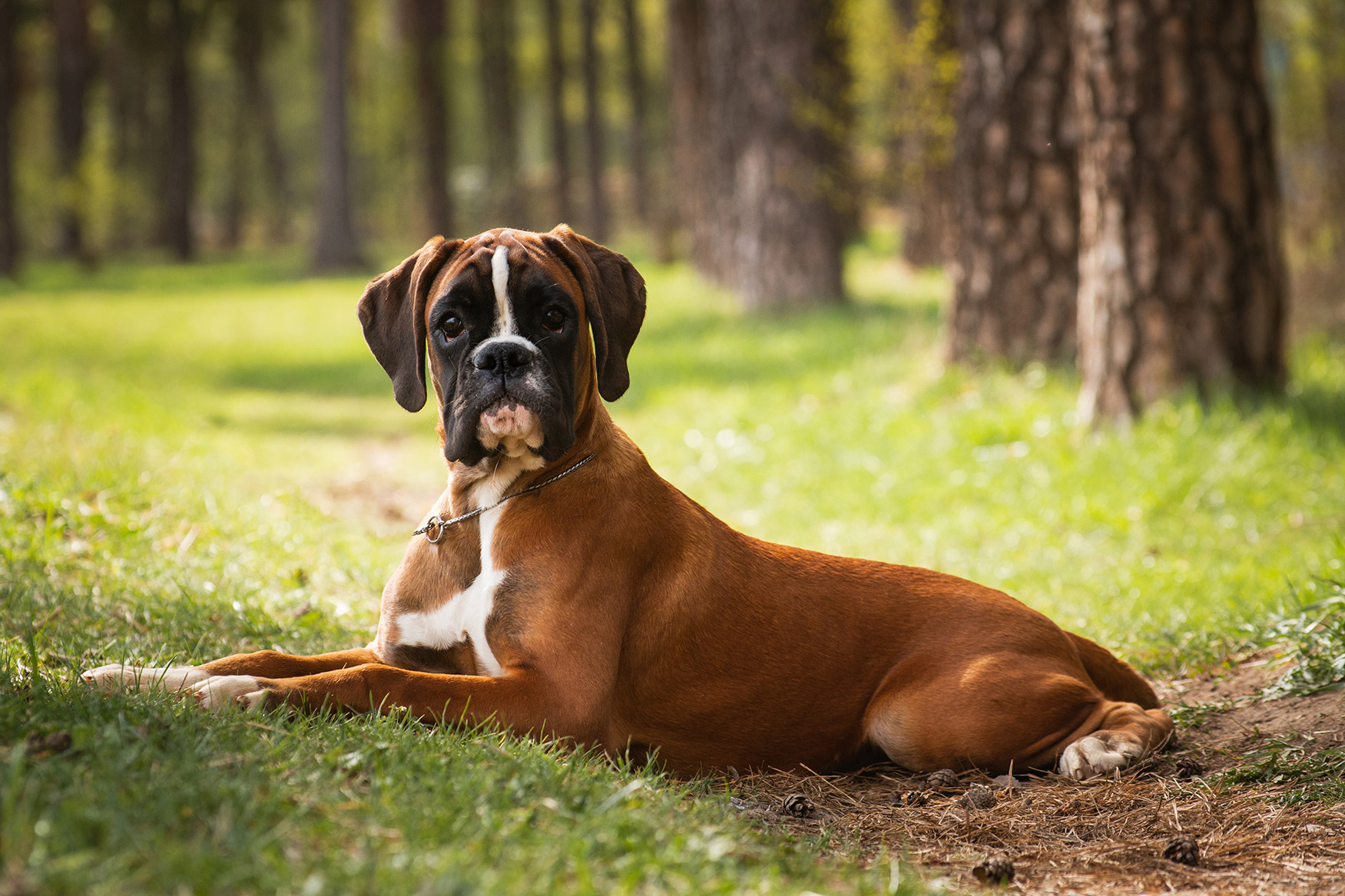Boxer

Description
The Boxer is a medium to large-sized, energetic, and playful breed known for its athletic build, intelligence, and loyal nature. Originating in Germany, the Boxer was initially bred as a hunting and working dog, used for tasks such as guarding, herding, and even as a messenger dog in wartime. Today, it is a popular family companion and versatile working breed.
Physically, Boxers are muscular and well-proportioned, with a distinctive square-shaped head, strong jaws, and a broad chest. Their short, smooth coat typically comes in fawn, brindle, or white, often with black facial markings and white accents. Their expressive faces and playful demeanor make them particularly endearing.
Boxers are known for their high energy, friendly temperament, and strong bond with their families. They are affectionate, good with children, and protective, making them excellent family dogs and reliable watchdogs. However, their exuberant personality means they need plenty of exercise and mental stimulation to stay happy and well-behaved. Without proper outlets for their energy, they may develop undesirable behaviors.
Training a Boxer is typically rewarding, as they are intelligent and eager to please. However, they can also be strong-willed and excitable, so consistent, positive reinforcement training is essential. Early socialization helps ensure they are confident and well-mannered around strangers and other animals.
The breed thrives in active households where they can participate in physical activities such as walking, running, or playtime. Boxers are also known for their clownish behavior and love to entertain their families. They adapt well to various living situations but require regular exercise to prevent boredom.
Overall, the Boxer is a loving, energetic, and loyal breed, making it an excellent choice for active families or individuals who can provide the time, training, and exercise it needs. With the right care, the Boxer is a devoted and entertaining companion.
History
The Boxer is a medium-to-large working dog that originated in Germany toward the end of the 19th century. Its principal ancestor was the German *Bullenbeisser* (which literally translates to "bull biter"), a strong and agile mastiff-type breed used historically for big-game hunting. As the need for large hunting dogs waned, German breeders began crossing the Bullenbeisser with other breeds—including early Bulldogs—to create a more refined and versatile dog. The resulting canine combined the muscular build and tenacity of its forebears with a more tractable nature, setting the foundations for the modern Boxer.
Early enthusiasts of the emerging breed developed the first Boxer breed standard in Munich in the late 1890s. The breed started gaining traction thanks to its adaptability and trainability; Boxers served as utility dogs in police, military, and guard work, earning a reputation for courage and loyalty. The name “Boxer” likely stems from the breed’s playful tendency to use its front paws in a sparring-like motion. Though this is partly folklore, it reflects the dog’s energetic, sometimes clownish nature.
Boxers first arrived in the United States in the early 20th century. The American Kennel Club (AKC) officially recognized the breed in 1904. However, it wasn’t until after World War II—when soldiers returning from Europe brought Boxers back home—that the breed’s popularity truly soared. Their affectionate temperament, short coat, and expressive face made them appealing family companions as well as versatile working dogs.
Today, the Boxer remains a favorite across the globe, cherished for its exuberant personality, intelligence, and steadfast devotion to family. While they can still excel in protection and performance roles, most modern Boxers serve as beloved household pets. Yet, the breed’s athleticism and spirit hearken back to its robust Bullenbeisser heritage, reminding us of its original working roots.
Colors
• Brindle
• Fawn
• White


